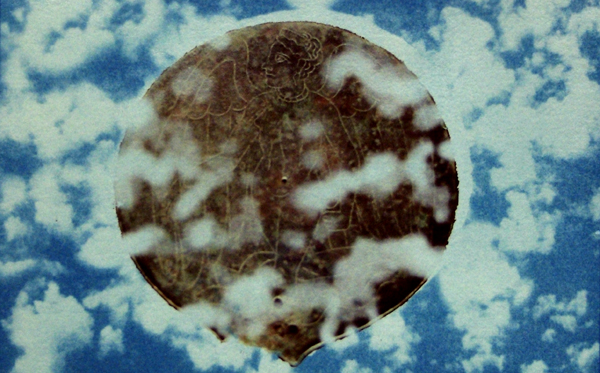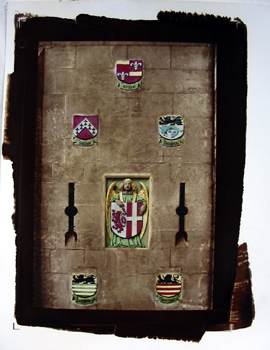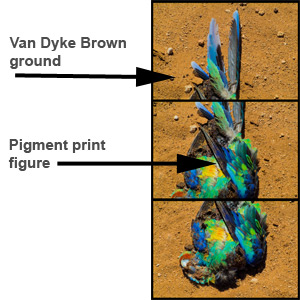This
is an introduction to various means of combining different printing
techniques to create multi layered dynamic images from photo-based imagery.
Rather than give precise details of all the process is, it is designed
to offer a foundation from which to develop a personal methodology when
experimenting with these techniques.
Choosing the image
When experimenting with these processes it is important to recognize
that - producing a successful combination print is not necessarily a
finite process that can be predicted at the beginning. It helps to have
an open attitude to the idiosyncrasies of the processes, be aware that
mistakes can open up new and interesting possibilities and accept them
as opportunities that can lead to new and challenging works.
Previsulizing
Before you begin, spend sometime
imaging how the source images might combine – look to continually
develop the skill of hybrid print visualization - how the visual aspects
of separate images might combine as a single work – which aspects
lend themselves to specific processes.
Once you have done some work
in this area you will realize, it is crucial to select the appropriate
source images and processes - one needs experience to gain a critical
vision in establishing the potential of how several mediums can be combined.
So while two fantastic images in their own right - say a pigment print
and a cyanotype - might combine well, it is likely that they will visually
collide and fail as a hybrid print amalgamation. On the other hand two
technically poor and uninteresting images might combine and create an
interesting result – but it is also likely that they will fail.
Combining several technically poor in and interesting images in that
hope they might combine and make something compelling is not a good
strategy.
From our experimentation, Silvi Glattauer and I have identified several factors that help in producing a successfully hybrid print.
| • Cyanotypes over pigment works best where the original image has a naturally blue element like sky or water - the cyanotype becomes an augmentation or replacement for these areas. |
 |
| • Van Dyke Brown prints work best where the original image are tonally rich shadows, or has a naturally brown or even dark red brown areas - the van dyke emulsion becomes an augmentation or replacement for these areas |
 |
| • The image is has a rich texture like stones sand etc, |
|
| •The image has a simple design |
|
| There are two basic methods one looks to replace or augment a particular colour over the whole print, |
|
| while the other works on the basis of figure ground relationships, either replacing the figure colour or the ground colour |
 |